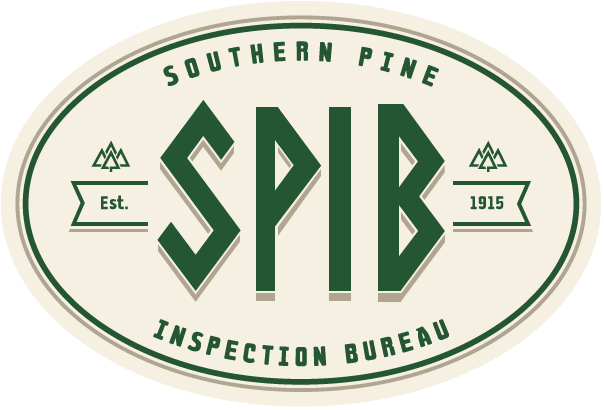FAQ
Resources
Frequently Asked Questions
Publications | FAQ
- How are design values derived?
-
Design values provide guidance for designers to calculate the performance of a structural system and are assigned to six basic lumber properties. Design values for stiffness, as well as the major strength properties of bending, tension and compression parallel-to-grain, are based on data from destructive testing of samples of commercially-produced structural lumber. Design values for the minor strength properties of shear and compression perpendicular-to-grain are based on published clear-wood properties.
Design values for structural lumber go through a rigorous approval process. As the rules-writing agency for Southern Pine lumber, the Southern Pine Inspection Bureau (SPIB) is responsible for developing and publishing design values for Southern Pine. All testing and data analysis must be completed in accordance with approved standards. Proposed design values are submitted to the American Lumber Standard Committee (ALSC). Design values are approved by the ALSC Board of Review following a careful review and recommendation from the U.S. Forest Products Laboratory.
-
- Why isn't the species name on lumber marked with an SPIB grade-mark?
-
Under the provisions of US Department of Commerce Voluntary Product Standard PS-20, if the species is denoted by the agency's mark then the species name does not have to be duplicated. Any lumber marked as SPIB, with no additional species designation, is Southern Pine (also referred to as Southern Yellow Pine and officially designated as SYP). Lumber containing the minor species will be labeled as Mixed Southern Pine.
-
- What is the difference between SYP and SP?
-
SYP and SP are both abbreviations for Southern Yellow Pine. The phrase “Southern Yellow Pine” is often shortened to “Southern Pine”, but both “Southern Yellow Pine” and “Southern Pine” refer to a species grouping of pines grown in the southeastern United States which includes Longleaf, Shortleaf, Loblolly, and Slash pines. The official species designation on non-SPIB grade marks is “SYP”. (See also: Why isn't the species name on lumber marked with an SPIB grade-mark?) The official species designation of SYP helps alleviate confusion between other species that might be abbreviated with an SP such as Spruce Pine, Sand Pine, Spruce-Pine Fir (SPF), Spruce-Pine-Fir South (SPF-S), or Norway Spruce (N SPR).
-
- What is Mixed Southern Pine?
-
Mixed Southern Pine is treated as a separate species group from Southern Yellow Pine. It includes the minor species of pond pine and Virginia pine, but can also include any of the four major species of Longleaf, Shortleaf, Loblolly, or Slash pines. The species designation on the grade mark will show the phrase “Mixed Southern Pine” or it can be abbreviated as “MSP”.
-
- What is Spruce Pine and Sand Pine?
-
Spruce pine is different from the Spruce that is included in Spruce-Pine Fir. Spruce pine and sand pine are pines grown in the southeastern United States that very rarely, if ever, are cut into dimension lumber. The species designation for these species are “Spruce Pine” and “Sand Pine” respectively, and the design values can be found by using factors found in the SPIB Grading Rules book. Factors for Spruce Pine are also found in footnote to Table 4B in the National Design Specification Supplement.
-
- Where can I get span tables?
- Here's a link: https://www.spib.org/resources/design-values
- My lumber is labeled with a HT stamp, does HT mean treated?
-
The HT mark means the lumber has been heat treated and has reached a critical temperature at the core to eradicate the "Pinewood Nematode" and its vectors. HT does not mean the lumber has been treated with a chemical preservative.
-
- How do I become a lumber grader?
- Does the eLearning qualify me as a certified grader?
-
The courses provide a completion certificate. In order to be qualified to grade lumber in a lumber producing facility you will need additional on the job training. Thorough knowledge of the rules and ability to make the correct calls will need to be observed by an accredited grading agency.
-
- I own a small portable sawmill. How do I stamp my lumber for personal use?
